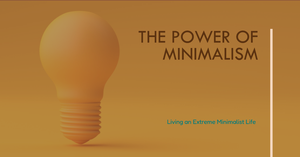In a world overflowing with stuff, distractions, and obligations, minimalist living offers a breath of fresh air. Minimalism isn’t just about having fewer things—it’s about making space for what truly matters: peace, purpose, and personal growth. By consciously reducing clutter—both physical and mental—you can live a more meaningful, intentional, and fulfilled life.

What Is Minimalist Living?
Minimalist living is a lifestyle that prioritizes quality over quantity. It encourages you to simplify possessions, routines, and commitments. The idea isn’t deprivation; it’s freedom from excess, so you can focus on the people, experiences, and passions that bring real value.
Key Principles of Minimalism:
- Declutter your space – Keep only what is necessary or brings joy.
- Prioritize experiences over things – Invest in memories, travel, and learning.
- Reduce mental clutter – Say no to unnecessary commitments and digital distractions.
- Mindful consumption – Buy less but choose quality items that last.
- Intentional living – Align daily habits with your core values.
Benefits of Minimalist Living
- More Mental Clarity – A decluttered space often leads to a decluttered mind.
- Financial Freedom – Spending less on things you don’t need frees money for investments and experiences.
- Less Stress – Fewer possessions and commitments reduce anxiety and decision fatigue.
- Better Relationships – Focus on connecting with people instead of objects.
- Sustainable Lifestyle – Minimalism naturally encourages eco-friendly living by reducing waste.

How to Start Minimalist Living Today
- Step 1: Audit Your Space – Go room by room and separate items into keep, donate, or discard.
- Step 2: Evaluate Your Commitments – Cut down on non-essential activities that drain energy.
- Step 3: Digital Minimalism – Unsubscribe from unnecessary emails, limit social media scrolling, and organize digital files.
- Step 4: Mindful Shopping – Before buying, ask: “Do I truly need this?”
- Step 5: Create Intentional Routines – Focus on daily habits that align with your personal values.
Common Misconceptions About Minimalism
- It’s not about deprivation – You still enjoy life; it’s about making intentional choices.
- You don’t need to live in a stark, empty home – Minimalism is flexible; the key is purposeful living.
- It’s not a one-time declutter – Minimalism is an ongoing practice and mindset.
Minimalist Living in Practice
- Home: Keep surfaces clear, donate items you haven’t used in a year, and embrace multifunctional furniture.
- Work: Prioritize tasks, eliminate unnecessary meetings, and focus on impactful projects.
- Mindset: Practice gratitude for what you have, meditate, and focus on personal growth.



























💬 No comments yet. Be the first to share your thoughts!